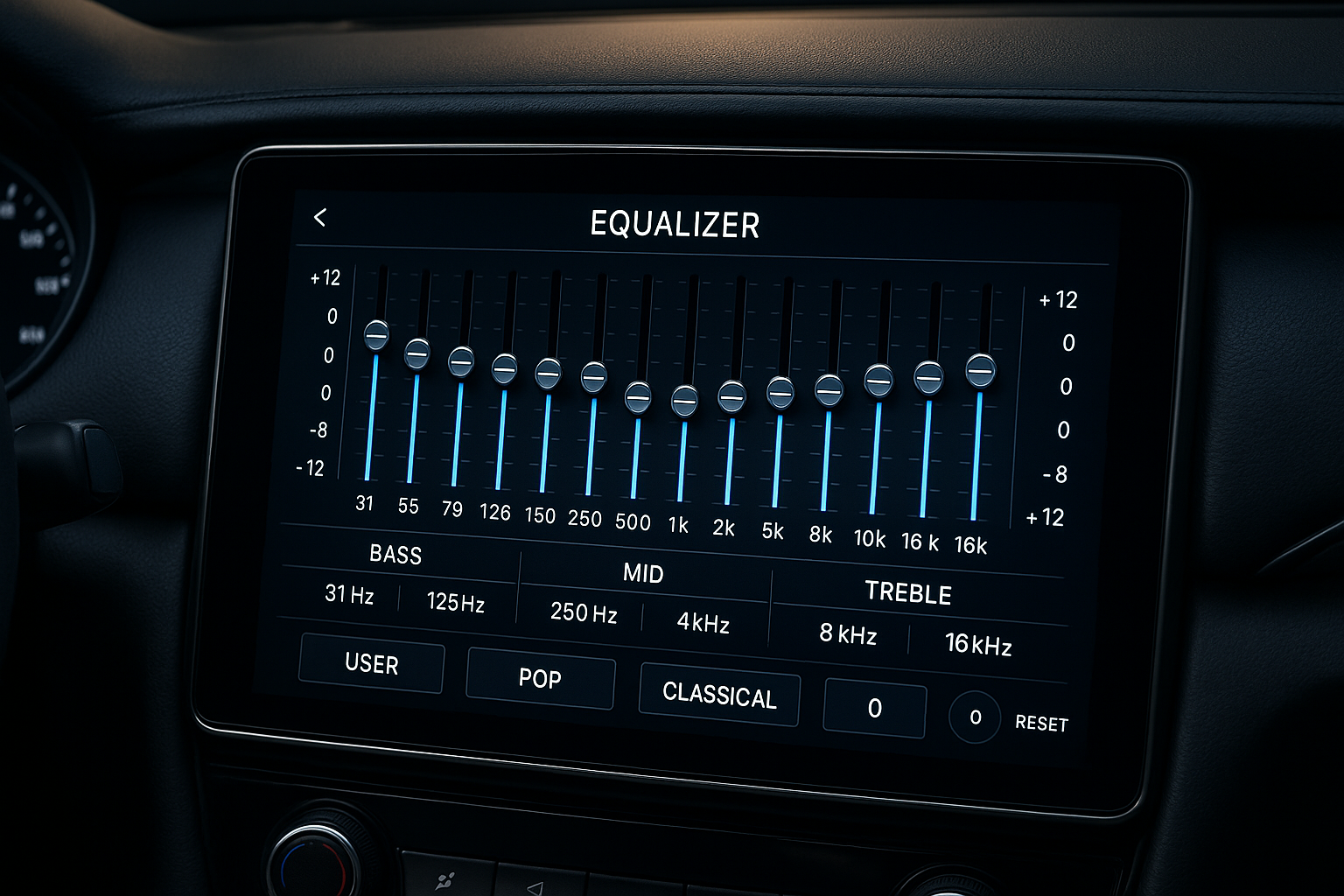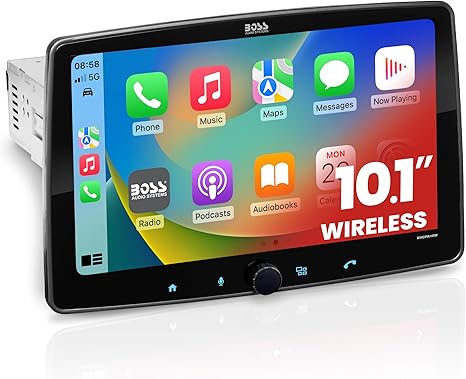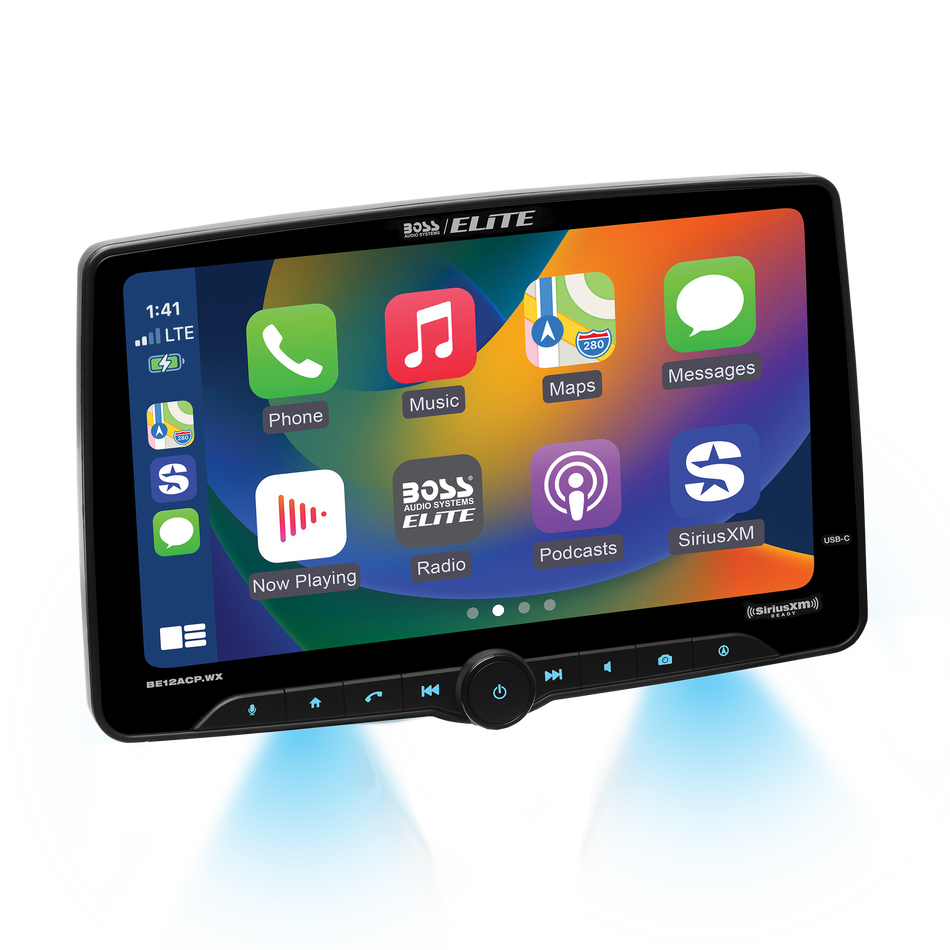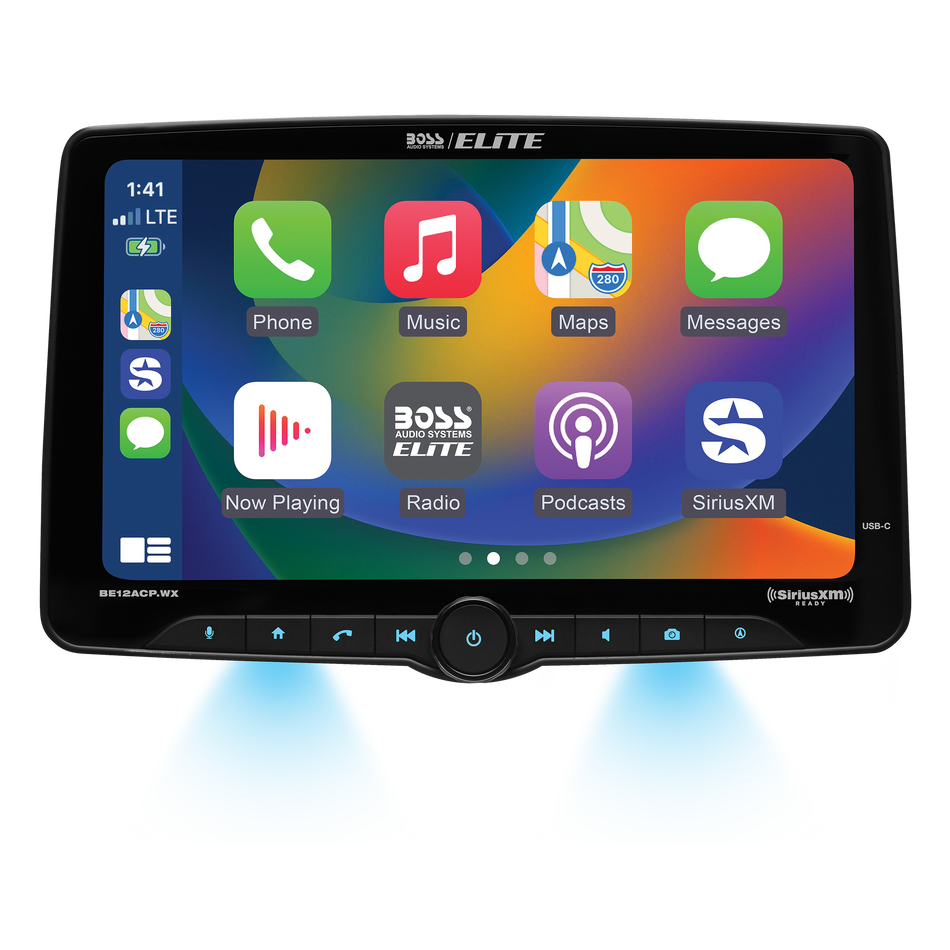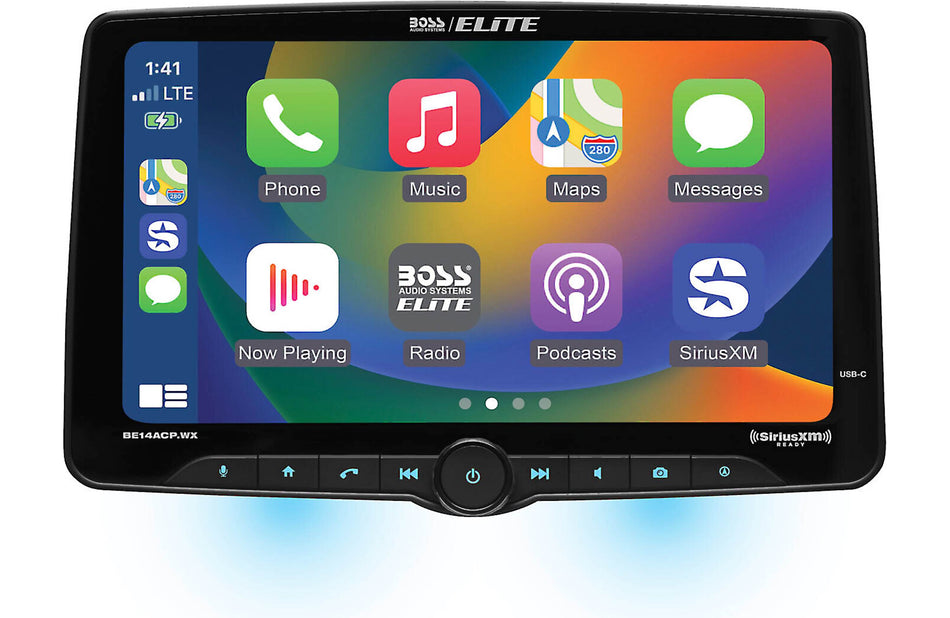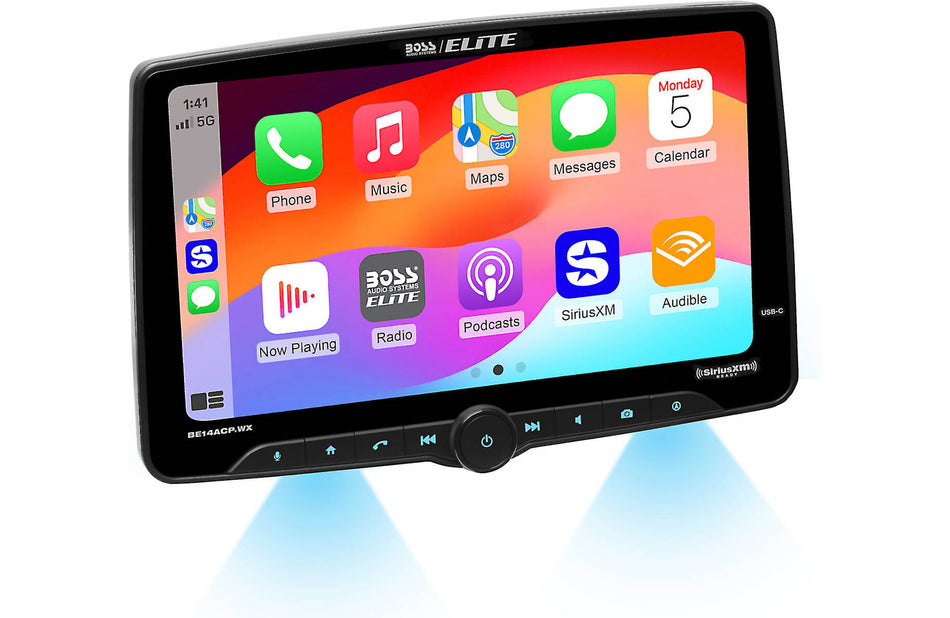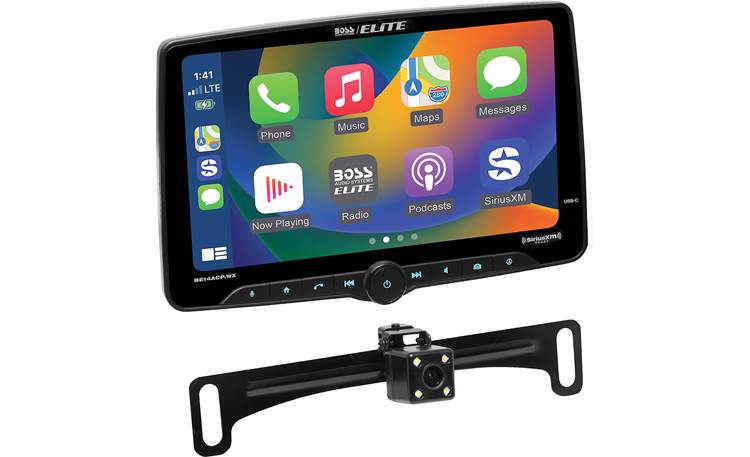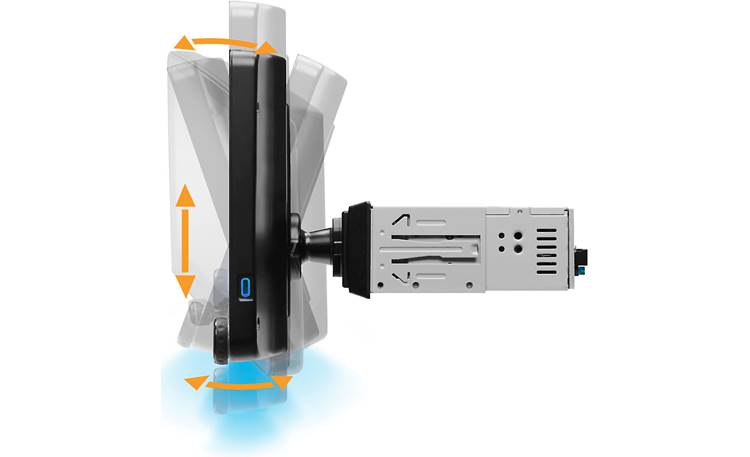Car audio is more than loudness or a strong bass, it is about balance, clarity and control. An equalizer (EQ) is of vital significance to the sound of your music in your car. Do you love shaking your seats with deep bass, vocal clarity so crystal clear or just a high and low mix, either way the correct tweaking of your car audio EQ settings can make the difference.
What Is an Equalizer in Car Audio?
Equalizer is a sound control adjustment tool which allows you to limit various frequency bands of your music. Bass, midrange, and treble are the ranges that affect the sound of instruments and vocals on your speakers.
-
Bass (20Hz – 250Hz): Low-end frequencies responsible for thumping beats and depth in music.
-
Midrange (250Hz – 4kHz): Covers vocals, guitars, and most instruments that carry the melody.
-
Treble (4kHz – 20kHz): Higher frequencies that add brightness, detail, and sharpness.
Adjusting these ranges, you will be in control of defining your sound to the taste and the setting. That is why car audio EQ settings are regarded as the key to a pleasurable listening experience.
Why Equalizer Settings Matter in Cars
Cars audio is a challenge as compared to a home stereo system. All sound quality is influenced by road noise, the position of speakers and even the interior material. Unless you make proper EQ tweaks you may have too much bass, too much muffling of the mids, or too much harsh treble.
Correct equalizer settings allow you to:
-
Balance sound across all speakers.
-
Enhance clarity for different genres of music.
-
Reduce distortion at higher volumes.
-
Adjust frequencies to overcome background noise.
-
Personalize audio to your unique listening preference.
An effectively adjusted EQ makes all notes be audible the way they are meant to be, whether you are listening to hip-hop, rock, classical, and EDM.
Understanding Frequency Bands in Car Audio
Equalizers mostly come with different numbers of bands, such as 5-band, 7-band, or even 31-band EQs. The more bands you have, the more precise your control.
Here’s a list of how frequency bands affect your car audio:
|
Frequency Range |
Common Sounds Affected |
Adjustment Purpose |
|---|---|---|
|
20Hz – 60Hz |
Deep bass, sub-bass |
Adds punch and power |
|
60Hz – 250Hz |
Kick drums, bass guitar |
Controls warmth and fullness |
|
250Hz – 1kHz |
Vocals, guitars, pianos |
Defines mid clarity |
|
1kHz – 4kHz |
Instruments, vocals presence |
Enhances detail and sharpness |
|
4kHz – 8kHz |
Cymbals, snares, high notes |
Adds brightness |
|
8kHz – 20kHz |
Sparkle, air in music |
Creates crisp detail |
Knowing which band controls what makes it easier to fine-tune your setup without guesswork.
Best Equalizer Setup for Car Audio
Although sound preferences vary among all, there are some EQ configurations that always give a well-balanced listening experience.
-
Start with a Flat EQ
Reset your EQ so all frequencies are at zero. This gives you a clean starting point. -
Adjust Bass First
Boost slightly in the 60Hz–120Hz range for thump, but avoid overdoing it to prevent distortion. -
Fine-Tune the Mids
Maintain the mid frequencies to be balanced to ensure clarity of vocals and instruments. Excess midrange will make the sound boxy and too little will leave music hollow. -
Set Treble for Detail
Add brightness by adjusting 4kHz–10kHz slightly upward, but avoid making it harsh. -
Test with Different Genres
Play hip-hop, rock, acoustic, and electronic tracks to see how your EQ handles each style.
This general tuning method ensures a balanced sound that works across most types of music.
Best Equalizer Settings for Car Audio Bass, Mid, and Treble
For listeners who want to go deeper, here are practical EQ suggestions for different preferences:
-
For Bass Lovers:
-
Boost around 60Hz–100Hz moderately.
-
Slightly cut 250Hz to avoid muddiness.
-
Keep mids neutral for clarity.
-
Add a touch of treble around 8kHz for balance.
-
For Vocal Clarity:
-
Keep bass slightly lower around 60Hz.
-
Boost mids around 1kHz–2kHz to bring vocals forward.
-
Lightly raise the treble for crispness.
-
For Balanced Soundstage:
-
Mild bass boost around 80Hz.
-
Neutral mids for natural instrument reproduction.
-
Treble adjusted slightly above flat for detail.
-
For Rock and Metal:
-
Boost bass for kick drums.
-
Add presence in the mids (2kHz–4kHz) for guitars.
-
Raise treble around 6kHz for cymbal sharpness.
Trying these settings, you will find the most suitable equalizer settings that will be most suitable to you and the sound of your car.
Common EQ Mistakes to Avoid
Even with the best equalizer setup for car audio, it’s easy to make mistakes that reduce sound quality. Some common issues include:
-
Over-boosting bass: Causes distortion and drowns out mids
-
Ignoring mids: Leads to vocals sounding weak or recessed
-
Excessive treble: Makes music sound sharp and fatiguing
-
Not compensating for car acoustics: Every vehicle interior shapes sound differently
You should always keep in mind a rule of thumb which is to do little changes rather than big increases or reductions.
Tips for Getting the Best Equalizer Setup
-
Use high-quality audio files: Low-quality MP3s can’t be fixed by EQ.
-
Upgrade speakers or amplifiers: Better hardware works hand in hand with EQ adjustments.
-
Experiment in small increments: Subtle changes often deliver the best results.
-
Save multiple EQ profiles: Some systems let you store presets for different music genres.
-
Rely on your ears: Every person hears frequencies differently, so personal preference matters most.
Equalizer Settings for Different Vehicles
Car acoustics differ between compact cars, SUVs, and trucks. For example:
-
Small Cars: Bass may feel overwhelming due to limited cabin space. Reduce low frequencies slightly for balance.
-
SUVs: Larger interiors absorb more bass, so boosting lows may be necessary.
-
Trucks: Can be tricky due to cabin shape, midrange adjustments are usually important for clarity.
Your ideal car audio EQ settings will depend not only on your music preference but also on the type of vehicle you drive.
Do You Need a Professional Tune-Up?
Although DIY modifications are effective, professional car audio tuning can allow you to get the most of your sound system. The professionals also tune with tuning software, microphones, and analyzers to adjust frequencies and tune them accurately to your car.
When you have invested in a good quality of speakers, amps or even subwoofers, a tuning by a professional can make a difference in the quality of sound.

